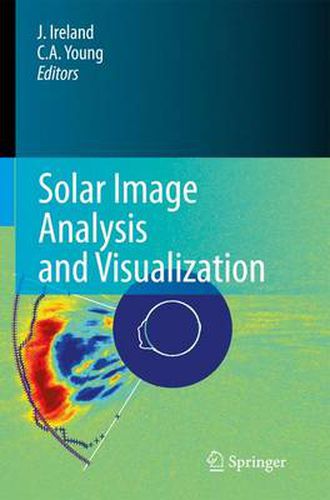Readings Newsletter
Become a Readings Member to make your shopping experience even easier.
Sign in or sign up for free!
You’re not far away from qualifying for FREE standard shipping within Australia
You’ve qualified for FREE standard shipping within Australia
The cart is loading…






The SECCHI A and B instrument suites (Howard et al. , 2006) onboard the two STEREO mission spacecraft (Kaiser, 2005) are each composed of: one Extreme Ultra-Violet Imager (EUVI), two white-light coronagraphs (COR1 and COR2), and two wide-angle heliospheric imagers (HI1 and HI2). Technical descriptions of EUVI, COR1 and the HIs can be found in Wuelser et al. (2004), Thompson et al. (2003), and De?se et al. (2003), respectively. The images produced by SECCHI represent a data visualization challenge: i) the images are 2048x2048 pixels (except for the HIs, which are usually binned onboard 2x2), thus the vast majority of computer displays are not able to display them at full frame and full r- olution, and ii) more importantly, the ?ve instruments of SECCHI A and B were designed to be able to track Coronal Mass Ejections from their onset (with EUVI) to their pro- gation in the heliosphere (with the HIs), which implies that a set of SECCHI images that covers the propagation of a CME from its initiation site to the Earth is composed of im- ?1 ages with very different spatial resolutions - from 1. 7 arcsecondspixel for EUVI to 2. 15 ?1 arcminutespixel for HI2, i. e. 75 times larger. A similar situation exists with the angular scales of the physical objects, since the size of a CME varies by orders of magnitude as it expands in the heliosphere.
$9.00 standard shipping within Australia
FREE standard shipping within Australia for orders over $100.00
Express & International shipping calculated at checkout
The SECCHI A and B instrument suites (Howard et al. , 2006) onboard the two STEREO mission spacecraft (Kaiser, 2005) are each composed of: one Extreme Ultra-Violet Imager (EUVI), two white-light coronagraphs (COR1 and COR2), and two wide-angle heliospheric imagers (HI1 and HI2). Technical descriptions of EUVI, COR1 and the HIs can be found in Wuelser et al. (2004), Thompson et al. (2003), and De?se et al. (2003), respectively. The images produced by SECCHI represent a data visualization challenge: i) the images are 2048x2048 pixels (except for the HIs, which are usually binned onboard 2x2), thus the vast majority of computer displays are not able to display them at full frame and full r- olution, and ii) more importantly, the ?ve instruments of SECCHI A and B were designed to be able to track Coronal Mass Ejections from their onset (with EUVI) to their pro- gation in the heliosphere (with the HIs), which implies that a set of SECCHI images that covers the propagation of a CME from its initiation site to the Earth is composed of im- ?1 ages with very different spatial resolutions - from 1. 7 arcsecondspixel for EUVI to 2. 15 ?1 arcminutespixel for HI2, i. e. 75 times larger. A similar situation exists with the angular scales of the physical objects, since the size of a CME varies by orders of magnitude as it expands in the heliosphere.